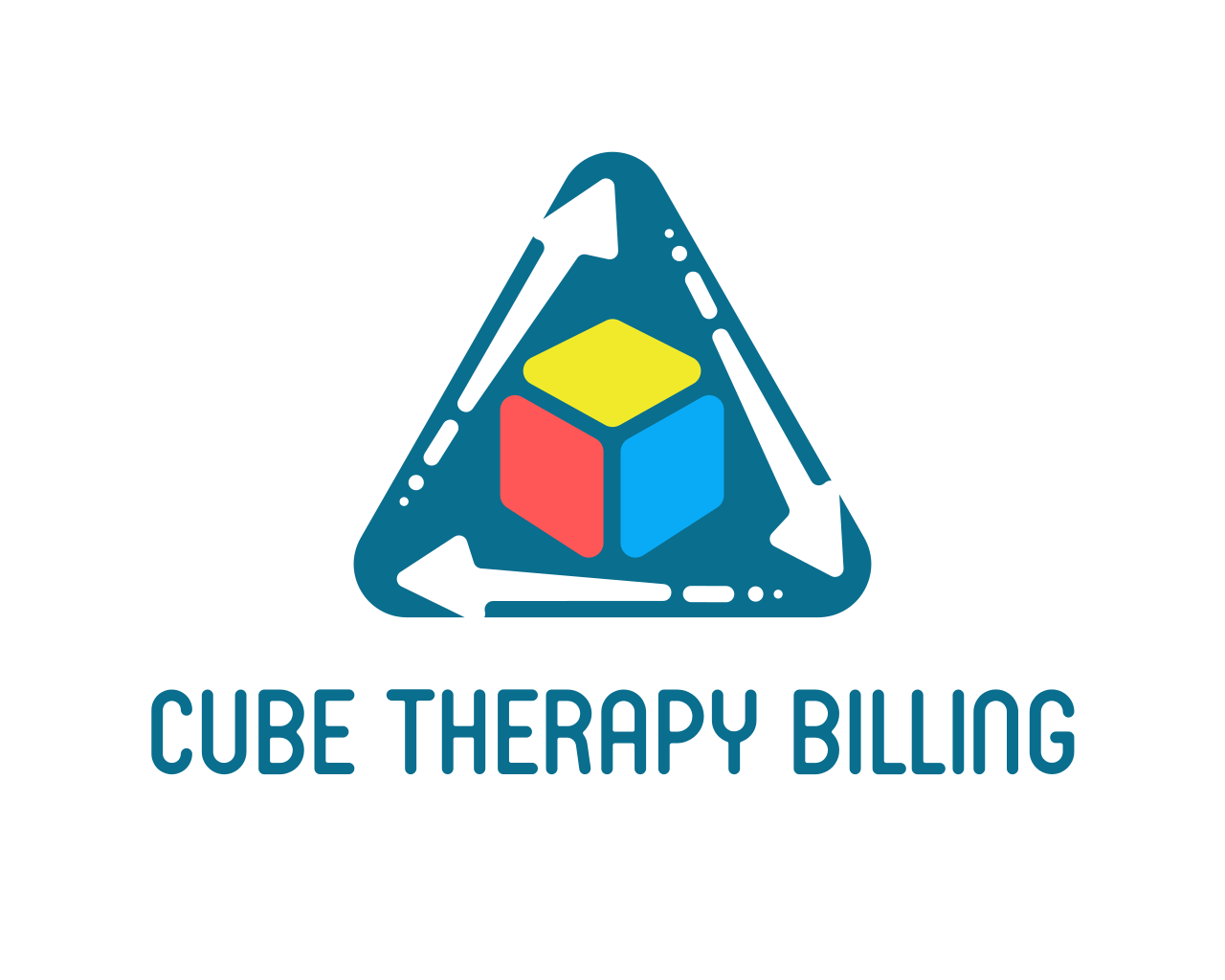Want AI to Fix Credentialing? Only If You Do This First
- Veronica Cruz

- Aug 5, 2025
- 6 min read

Credentialing has long been one of the most frustrating bottlenecks for ABA therapy practices. Endless paperwork. Weeks—sometimes months—of back-and-forth with payers. And even when everything seems in place, a single missed attestation or an expired CAQH profile can stall the entire process.
AI-powered credentialing tools promise to speed up the process, reduce errors, and cut the onboarding timeline in half.
The problem is that AI won't improve credentialing until you first improve your procedure. Automation can only exacerbate problems more quickly if your foundation is weak—undefined roles, dispersed data, and antiquated workflows.
The problem is that AI won't improve credentialing until you first improve your procedure. Automation can only exacerbate problems more quickly if your foundation is weak—undefined roles, dispersed data, and antiquated workflows.
So let’s break it down. If you want to use AI to streamline ABA credentialing, this is what you need to get right first.
Understand the Real Cost of Broken Credentialing
Let’s not sugarcoat it. Delays in insurance credentialing for ABA, BCBA, speech therapists, or physical therapists don’t just hurt your schedule—they hit your revenue.
If a therapist isn’t credentialed on time, you can’t bill. If an expired license goes unnoticed, services get denied. And if recredentialing slips through the cracks, your entire revenue cycle can suffer.
According to recent industry data:
Manual credentialing causes up to 30% of insurance claim denials in therapy practices.
Credentialing errors can delay provider onboarding by 60–90 days.
A single lapse in therapist credentialing can result in thousands of dollars in lost revenue per month.
Now imagine automating that—but only after fixing your current pain points.
What Should You Build Before Automating Credentialing?
Before anything gets automated, build a solid base. Start by organizing all provider credentials in one place. Not dispersed over spreadsheets or email accounts—centralized, tidy, and up to date.
Assign responsibilities. Who’s on top of expiration dates? Who’s in charge of recredentialing?
Next, lay out every step from onboarding to payer approval. Think of it as a credentialing flowchart—no guesswork, no bottlenecks.
Now comes the real-time tracking piece. You need visibility into payer responses, license expirations, CAQH attestations, and compliance flags. If you don’t see it coming, you won’t fix it in time.
Once all that’s tight, you’re finally ready to scale with a tool like Sparkz or lean into a credentialing service. But skip this foundation, and automation will just make the chaos move faster.
Why AI-Based Credentialing Is a Game-Changer for ABA Providers
Spreadsheets fall apart when you're managing BCBA insurance credentialing at scale. An AI-based credentialing system tracks license renewals, CAQH profiles, and payer-specific documentation—automatically. It alerts your team before anything expires, preventing costly delays.
This is important. Insurance panel clearance can be delayed for weeks due to a missed attestation or an expired license, which slows down patient care and payments.
With AI-powered credentialing services, ABA therapy practices stay ahead—no scrambling, no bottlenecks. If you're offering ABA billing or managing credentialing for multiple providers, this tech doesn’t just help—it’s essential for growth, accuracy, and compliance.
Automated Form Filling & Smart Submission
These tools pull in existing provider data—NPI, license number, taxonomy—and auto-fill credentialing forms for each payer.
That means no more copy-pasting errors and no more forgotten fields. For multi-state providers, AI keeps credentialing consistent across multiple Medicaid programs and commercial insurance plans.
Real-Time Compliance Monitoring
Credentialing isn't static. Payers constantly update requirements—like new supervisor hours, NPI-linked attestations, or Medicaid enrollment formats.
AI tools scan for these updates and alert staff before submission, making therapy credentialing services proactive instead of reactive.
Integration with Practice Management & Billing
The most effective systems don't work alone. They integrate scheduling, billing, and client intake systems with credentialing data.
For example:
If a provider’s credentialing isn’t complete, the scheduler won’t assign them to billable sessions.
Insurance checks and authorizations tie directly to therapist profiles, reducing denials.
This is a game-changer for mental health credentialing with insurance companies and physical therapy credentialing services, where billing rules are tightly linked to credentials.
How Does AI Improve Therapist Onboarding and CAQH Management?
When it comes to onboarding new therapists or recredentialing current providers, AI removes the most time-consuming steps. From day one, AI systems start tracking the provider’s NPI, licenses, and documentation.
Automated CAQH Integration
One of the biggest headaches in ABA credentialing and medical credentialing for therapists is keeping the CAQH profile current. AI platforms directly connect with CAQH to:
Auto-pull provider data like license number, DEA, board certification, and insurance
Monitor attestation due dates and expiration of documents
Flag missing or outdated entries before they trigger rejections
Alert staff when CAQH needs re-attestation or when credentials are incomplete
Instead of staff chasing CAQH status manually, the system tracks it daily and ensures the information stays payer-ready.
Smart Email Notifications and Status Updates
AI tools don’t just gather information—they keep everyone informed:
Automatic onboarding emails go to new providers, guiding them step-by-step through credentialing requirements, form completion, and timelines.
Credentialing specialists receive instant status updates when documents are uploaded, CAQH is attested, or a payer application is submitted.
If something’s missing—like a license upload or signature—the system sends automated reminders to the provider or admin.
Managers get weekly summaries of credentialing status across all therapists, including red flags.
This communication flow replaces endless manual emails and reduces time wasted on follow-ups.
Example
Let’s say a new BCBA joins your team. Instead of tracking their progress in a spreadsheet, your credentialing software:
Sends them a welcome email with links to upload credentials
Checks CAQH for completeness and the last attestation date
Alerts the admin if malpractice insurance is missing
Notifies the billing team once the provider is fully enrolled
By the time they see their first client, their file is complete and payer-ready—no guesswork, no risk of billing denial.
How Does AI and Human Expertise Improve Credentialing for Therapists?
AI handles 80% of credentialing—tracking, CAQH, onboarding—but can’t manage exceptions like state-specific licensing or cross-credentialing. That’s where credentialing specialists step in. This AI-human combo reduces errors, saves time, and gets therapists credentialed faster with fewer denials.
Metrics That Prove It’s Working
When AI is properly integrated into credentialing for therapists, the impact is huge:
30–40% reduction in credentialing errors
25% faster onboarding—sometimes from 90 to 30 days
Staff save 6–10 hours per week, per therapist
Denials due to credentialing issues drop significantly
And those stats aren’t fluff. Credentialing services using tools like Sparkz’s automated credentialing support have documented these exact results—fewer errors, faster onboarding, saved admin hours, and a clear drop in denials due to credentialing issues.
Choosing the Right AI Credentialing Platform
Most credentialing platforms are built with hospitals or general healthcare in mind—not for ABA providers, counselors, or therapists. That’s why choosing the right AI-powered credentialing tools platform matters. You want something tailored to your field. Begin with a system that’s HIPAA-compliant and truly understands how credentialing works for counselors, ABA providers, and LCSWs. It should follow payer rules, not just store data. That’s your real starting point. Real-time dashboards and alerts, along with integration with CAQH, NPPES, PECOS, and Medicaid portals, are not optional features; they are essential. Additionally, the platform should include logic that helps stop denials before they happen and audit-ready reporting.
A strong option in this space is Sparkz-Ai. It tracks credentialing for BCBAs, RBTs, speech therapists, and physical therapists. It auto-syncs with CAQH, flags expiring credentials, and validates billing data before anything gets submitted. If you’re handling ABA credentialing services, re-credentialing, or full credentialing for therapy providers, Sparkz is built to handle the details and help you stay ahead.
Avoid These Common Pitfalls
Even the best AI systems won’t help if:
You don’t assign a credentialing manager or lead
Staff ignore alerts or auto emails from the platform
You treat credentialing like a one-and-done process
Credentialing is ongoing. You need systems—and people—in place for provider re-credentialing, Medicaid renewal, or insurance credentialing for physical therapists who change locations or caseloads.
FAQ
1. How is artificial intelligence revolutionizing the medical field?
AI is reshaping healthcare by speeding up diagnosis, personalizing treatment, reducing errors, and automating admin tasks—helping doctors and staff focus more on patient care, not paperwork.
2. What is the purpose of credentialing?
Credentialing checks a provider’s education, licenses, and background to confirm they meet state and insurance requirements. It helps keep patients safe, keeps your practice compliant, and ensures you can bill payers without interruptions.
3 . Can AI reduce credentialing time for new providers?
Yes. With the right setup, AI platforms like Sparkz cut onboarding timelines from 60–90 days to around 30 days by automating data entry, follow-ups, and tracking.
Conclusion
AI can take your credentialing to the next level—but only after you’ve laid the groundwork. Get organized, clarify responsibilities, and streamline your workflow first. Then, with the right tech, you’ll finally see speed, accuracy, and control fall into place.



